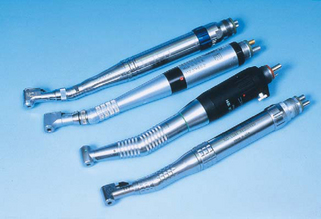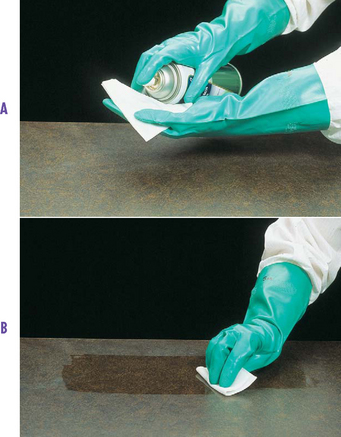CHAPTER 6 Infection Control in the Dental Office
Infection Control
Over the past several years there has been significant controversy and lack of understanding about the possibility of contracting disease while in a dental office: Investigational reporters have produced and presented television programs that have been negative about dentists and their ability to control transmission of disease from one patient to another.
HANDPIECES
A dental handpiece is the rotary cutting instrument used by dentists to remove decay from your teeth and shape them to allow adequate restoration (FIG. 6.1). A few years ago the lay press severely criticized the dental profession, alleging that dental handpieces were not properly sterilized. The same argument could be used about dishes, knives, forks, and spoons in restaurants. Dentistry has now progressed to the point that dental handpieces are sterilized by heat before being used in your mouth. The many moving parts in handpieces break down during sterilization because of this heat. The continual replacement of dental handpieces is one of the major overhead costs your dentist incurs to provide safe treatment for you. On the positive side, sterilized dental handpieces are not a risk for you.
ENVIRONMENTAL SURFACES IN THE DENTAL OFFICE
Countertops, drawers, handles, chairs, tables, etc. collect airborne particles as well as debris from actual physical contact with contaminated materials. Similarly, such surfaces in restaurants, public restrooms, and other areas are contaminated but seldom cleaned. What has happened to these surfaces in dental offices? Employees in most dental offices wipe environmental surfaces with strong disinfectants (FIG. 6.2). It is interesting that the disinfectants that are used are available in your grocery store. Lysol sprays containing 79% alcohol are very good surface disinfectants. When the solution is sprayed into a towel and then wiped onto the surface and allowed to dry, the surface is well disinfected. Most dental offices clean environmental surfaces after the completion of each patient.
Stay updated, free dental videos. Join our Telegram channel

VIDEdental - Online dental courses




